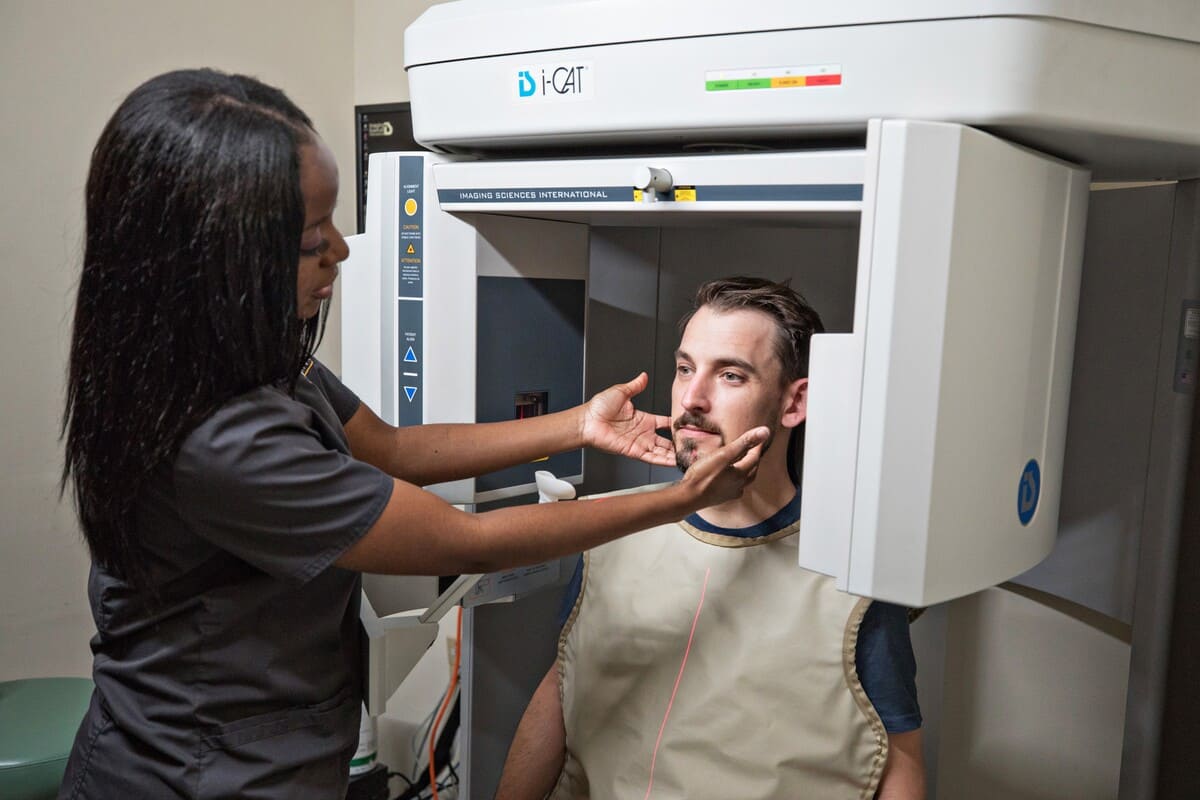
What is a Dental CBCT Scanner? A Dental CBCT scanner is a specialized X-ray machine used in dentistry. Unlike regular X-rays, it provides 3D images of teeth, soft tissues, nerve pathways, and bone in a single scan. This technology helps dentists diagnose and plan treatments more accurately. CBCT stands for Cone Beam Computed Tomography, which refers to the cone-shaped X-ray beam used to capture detailed images. These scanners are essential for procedures like implant placement, root canal treatment, and jaw surgery. They offer a comprehensive view, making dental care more precise and effective. Curious about more details? Let's dive into 31 fascinating facts about this game-changing dental tool!
What is a Dental CBCT Scanner?
A Dental CBCT scanner (Cone Beam Computed Tomography) is a specialized type of X-ray machine used in dental practices. It provides 3D images of teeth, soft tissues, nerve pathways, and bone in a single scan. This technology has revolutionized dental diagnostics and treatment planning.
- CBCT scanners use a cone-shaped X-ray beam to capture detailed images of the mouth and jaw.
- Unlike traditional X-rays, CBCT scans provide three-dimensional images, offering a more comprehensive view.
- The scanner rotates around the patient's head, capturing multiple images from different angles.
- These images are then compiled into a single 3D model by computer software.
- CBCT scans are particularly useful for planning dental implants, as they provide precise measurements of bone density and structure.
Benefits of Using a Dental CBCT Scanner
Dental CBCT scanners offer numerous advantages over traditional imaging techniques. They enhance diagnostic accuracy and improve patient outcomes.
- CBCT scans provide detailed images that help in accurate diagnosis and treatment planning.
- The 3D images allow dentists to see the exact position of teeth and roots, aiding in complex procedures.
- These scans can detect issues that might not be visible on regular X-rays, such as small fractures or hidden infections.
- CBCT imaging is quick, usually taking less than a minute to complete.
- The radiation dose from a CBCT scan is lower compared to traditional CT scans, making it safer for patients.
Applications in Dental Practice
Dental CBCT scanners are versatile tools used in various dental specialties. They assist in everything from routine check-ups to complex surgical procedures.
- Orthodontists use CBCT scans to plan treatments for misaligned teeth and jaws.
- Endodontists rely on CBCT imaging to locate root canals and diagnose infections.
- Oral surgeons use these scans to plan and execute precise surgical procedures.
- Periodontists benefit from CBCT scans when assessing bone loss and planning gum treatments.
- General dentists use CBCT imaging for comprehensive evaluations and treatment planning.
Enhancing Patient Experience
Patient comfort and safety are paramount in dental care. CBCT scanners contribute significantly to a positive patient experience.
- The quick scanning process reduces the time patients spend in the dental chair.
- Non-invasive nature of CBCT scans minimizes discomfort.
- Clear, detailed images help patients understand their dental issues and treatment plans better.
- Reduced radiation exposure ensures patient safety.
- Immediate results allow for faster diagnosis and treatment planning.
Technological Advancements in CBCT Scanners
The technology behind dental CBCT scanners continues to evolve, offering even more benefits to dental professionals and patients.
- Modern CBCT scanners come with advanced software for enhanced image processing.
- Some scanners offer adjustable settings to tailor the scan to the patient's specific needs.
- Portable CBCT scanners are now available, making it easier to use in various clinical settings.
- Integration with other dental technologies, such as CAD/CAM systems, streamlines the workflow.
- Continuous improvements in image quality provide even more detailed and accurate diagnostics.
Safety and Precautions
While CBCT scanners are generally safe, certain precautions should be taken to ensure patient well-being.
- Pregnant women should avoid CBCT scans unless absolutely necessary.
- Dentists should always use the lowest possible radiation dose to achieve the required image quality.
- Protective lead aprons and thyroid collars should be used to shield patients from unnecessary radiation.
- Regular maintenance and calibration of the scanner ensure optimal performance and safety.
- Proper training for dental professionals on the use of CBCT scanners is essential for safe and effective operation.
Future of Dental CBCT Scanners
The future looks promising for dental CBCT technology, with ongoing research and development paving the way for even more advanced applications.
- Artificial intelligence is being integrated into CBCT imaging for automated diagnosis and treatment planning.
Final Thoughts on Dental CBCT Scanners
Dental CBCT scanners have revolutionized dental care. They provide detailed 3D images, helping dentists diagnose and treat issues more accurately. This technology reduces the need for invasive procedures, making dental visits less stressful for patients. The precision of CBCT scans ensures better treatment planning, leading to improved outcomes.
Moreover, these scanners are safe. They use lower radiation doses compared to traditional CT scans. This makes them a safer option for patients, especially children and those needing frequent imaging.
Incorporating CBCT scanners into dental practices enhances the quality of care. Dentists can detect problems early, plan surgeries with greater accuracy, and monitor treatment progress effectively. This technology is a game-changer in modern dentistry, offering numerous benefits for both patients and practitioners.
Understanding the capabilities and advantages of dental CBCT scanners can help you appreciate the advancements in dental technology and the improved care they bring.
Was this page helpful?
Our commitment to delivering trustworthy and engaging content is at the heart of what we do. Each fact on our site is contributed by real users like you, bringing a wealth of diverse insights and information. To ensure the highest standards of accuracy and reliability, our dedicated editors meticulously review each submission. This process guarantees that the facts we share are not only fascinating but also credible. Trust in our commitment to quality and authenticity as you explore and learn with us.
